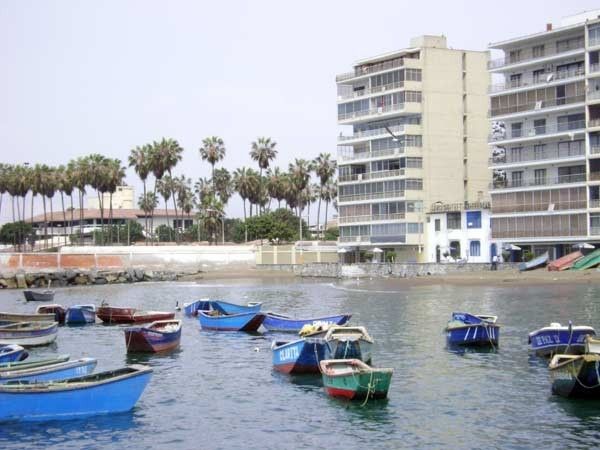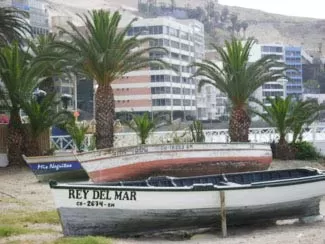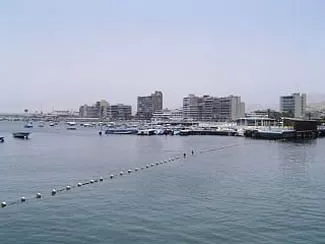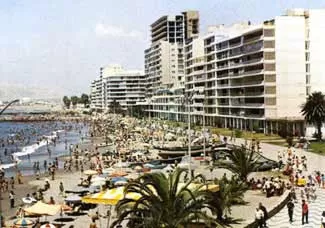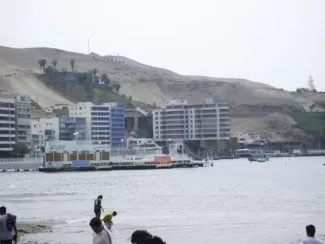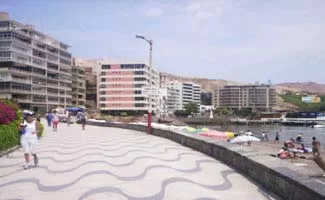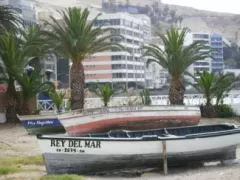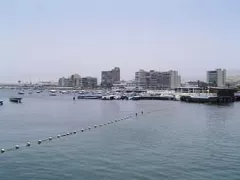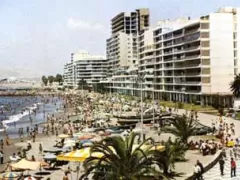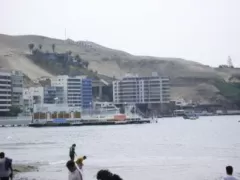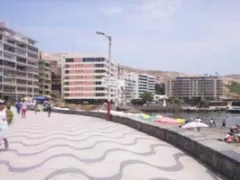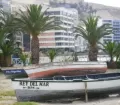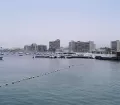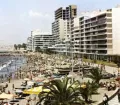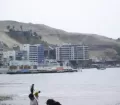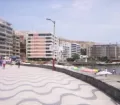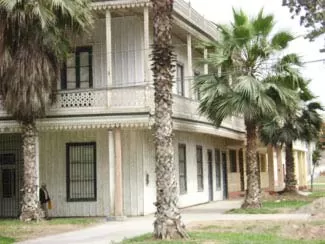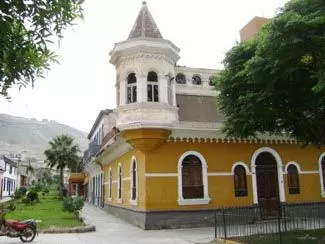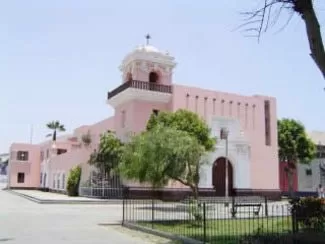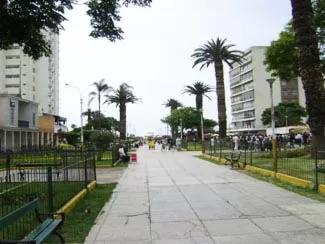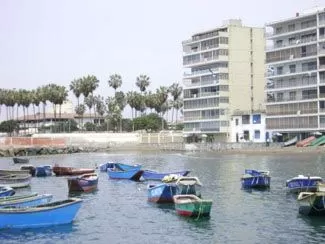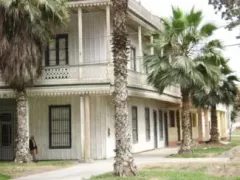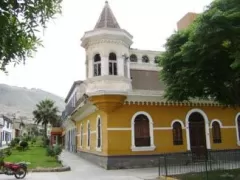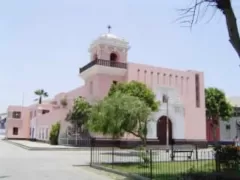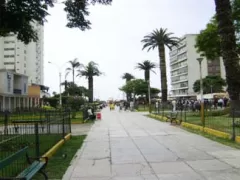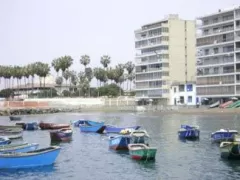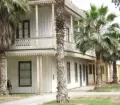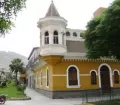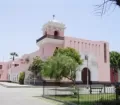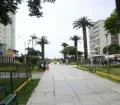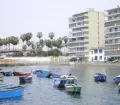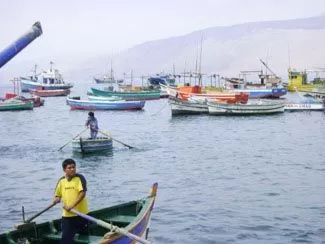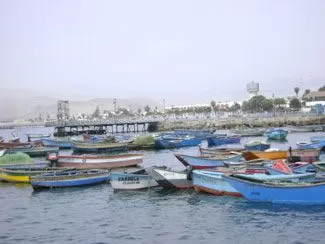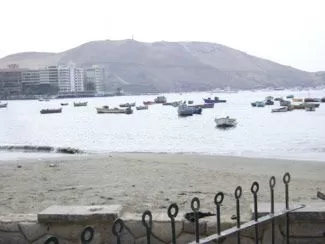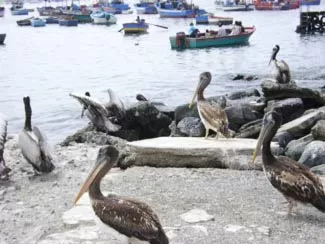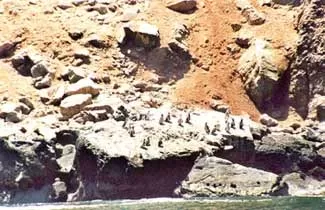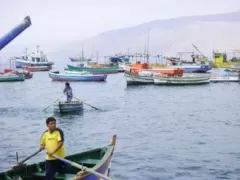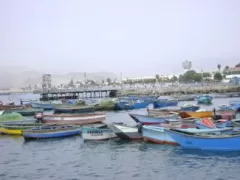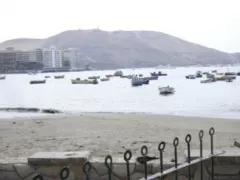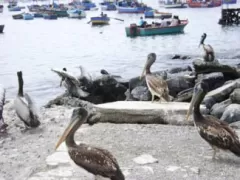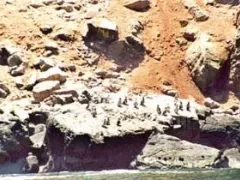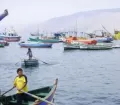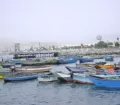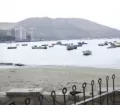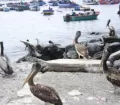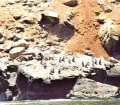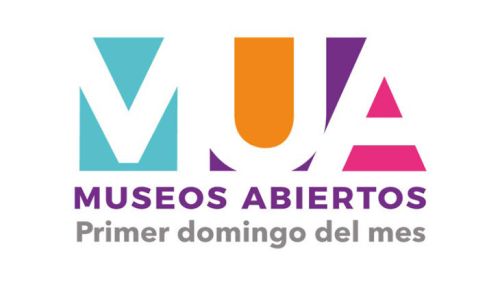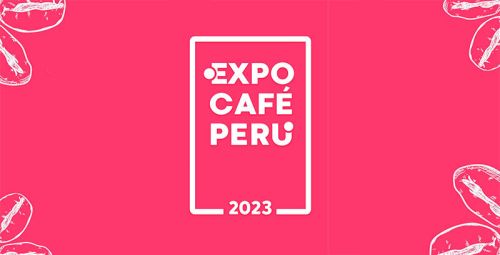Ancón is located 44 km north of the historical Center of Lima and still belongs politically to the Province of Metropolitan Lima. During Colonial times Ancón was known as the "Pueblo de Pescadores de Lancón" (Fishing village of Lancón). In the beginnings of the Peruvian Republic the small fishing village developed quickly during the middle of the 19th and 20th century as the well fashionable spa and beach resort for the aristocracy of Lima.
While today Lima's high society prefers to spend their summers at the beaches south of Lima, Ancón is still a very popular beach resort. On the contrary to Lima the climate of Ancón is quite dry throughout the year and therefore ideal for the stressed Limeñan lungs (very high humidity, air pollution...). The ocean is very calm and without significant waves, perfect conditions for swimming (if only the Humboldt Current didn't provide such a low water temperature) and water sports.
But Ancón has much more to offer: Next to modern skyscrapers you still find beautiful mansion from the 19th and 20th century and underneath the city highly important archaeological findings from the pre-Ceramic times and early cultures called the Chavin, Huaura and Chancay.
Facts & Figures about Ancón
The district of Ancón was officially established on the 29th of October 1874. It belongs politically to the Province of Lima and is located in the north of the Metropolitan. The district has an area of nearly 300 km² (or 29,864 hectares), being after the district of Carabayllo, the second largest district of the Lima & Callao Metropolitan area. Ancón is connected with Lima through the famous North Pan-American-Highway.
The district of Ancón is bounded to the north by the district of Aucallama (Huaral region), to the northeast by the district of Huamantanga (Canta region), to the southeast by the district of Carabayllo (Lima Province), to the south by the district of Puente Piedra (Lima Province) and Ventanilla (Constitutional Province of Callao), to the southwest by the district of Santa Rosa (Lima Province) and finally to the west by the Pacific Ocean.
Brief History of Ancón
The bay of Ancon had even in pre-historic times a large indigenous population. Traces of terraces on the southern cape can still be seen and the sand-covered hills and slopes overlooking the bay contain extensive burial-grounds. During the construction of the railway line from Lima to Chancay the first tombs of the Necrópolis of Ancón were discovered in 1870. In the following years archaeologists continued with the excavation and started extensive studies. In the stony and sandy soil they could dig up skulls, bones, mummified bodies accompanied by precious burial objects, adorned with beads, earrings and bird feathers and covered with richly decorated blankets and cotton cloth. The archaeologists found remains of three defined periods: First a very old one with direct Chavin Culture influence (Early Horizon, 900 - 300 BC), second an intermediate one with elements of the Huaura Culture (Late Intermediate, 900 - 1400 AC) and last another more recent one dominated by the Chancay Culture and the Incas (Late Horizon, 1440 - 1532 AC)
In 1959 the archaeologist Jorge C. Muelle discovered under the layers of the Chavin culture pre-Ceramic artifacts which indicate that the history of Ancón started even a few thousand years earlier than has been speculated for nearly 100 years. Today there are still over 35000 tombs to be studied. In more modern times Ancon has been the place of several important historical events. Its anchorage was used by Lord Cochrane in 1820 during his attacks on Callao; it was the landing-place of an invading Chilean army in 1838; it was bombarded by the Chileans in 1880 and in 1883 it was the meeting-place of the Chilean and Peruvian commissioners who drew up the Treaty of Ancon, which ended the Pacific War.
Places to visit & attractions in Ancón
Ancón is no longer only a spa and beach resort, but transformed in the last years to a modern city that has its visitors lots to offer: The stunning and beautiful Pacific Ocean just in front of it, Ancon's "malecon" (coastal road) and beautiful mansions from the 19th and 20th century are combined with modern buildings.
Plaza de Armas
Like in every Peruvian city you find at the Plaza de Armas (the main plaza/square) a church, in this case it is the "Iglesia de San Pedro of Ancón", which is a must for all church lovers. Just 300m away from the Plaza de Armas is one of the archaeological excavation sites.
Museum of Archaeological Investigations
In the Museum of Archaeological Investigations (on the Av. Prolongación Jorge Chávez) amazing findings of the pre-Hispanic cultures are displayed.
Pelicans & Boat trips
One of the nicest tourist attractions in Ancón is the main pier where you will find hundreds of Pelicans that feed on the vast amount of fish in the Pacific Ocean and breed on the offshore islands. Recommendable is a boat trip from Ancón harbour (just 200m away from Plaza de Armas) to the 13 islands offshore, known as "Grupo Pescadores". They are located before Punta Mulatos at the southern part of the Bay of Ancón. Each island is a permanent or temporary home for many marine birds like Peruvian Gull, Guanay Cormorant, Red-legged Cormorant, Inca Tern, Brown Pelican and more. Nice to watch is as a group of around 50 South American Sea Lions that call the island "Pescadores" their home.
The best time for a tour is from September to March. Then the birds leave the islands frequently and fish and bath in the ocean - An amazing spectacle.


